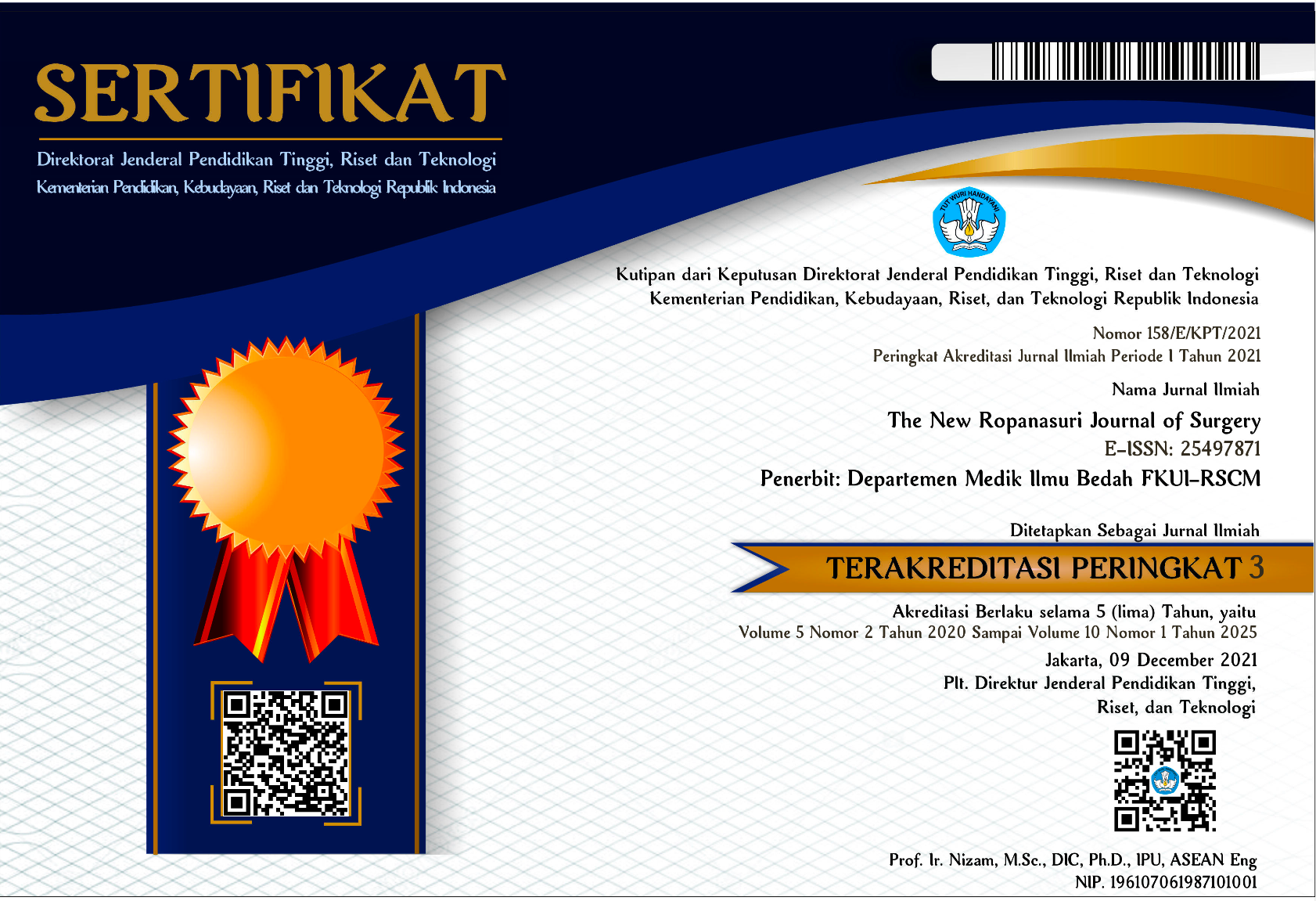Abstract
Introduction. In Indonesia, burn injuries cause about 195,000 deaths annually. Data from the Ministry of the Health Republic of Indonesia showed the incidence of burns predominated at 1-4 years old. The mortality of pediatric burn patients in a tertiary hospital was 37.26%. This study aimed to find an association between known and unknown prognostic factors of mortality in Indonesian-specific characteristics.
Method. A retrospective analytical study included all pediatric burns admitted to Dr. Cipto Mangunkusumo General Hospital (CMGH) from 1998 to 2010. Variables within a period of the first 72 hours of admission were the focus of interest and were extracted from the medical record.
Results. Of 609 pediatric burns, the mortality rate is 37.8%. Some contributing variables significantly associated with the mortality were TBSA, inhalation injury, length of hospitalization, hemoglobin 0-h level, hematocrit 24-h, and 48-h level, INR 0-h, and 48-h, fluid balance 24-h, base deficit, serum lactate, pulmonary edema, systemic inflammatory response syndrome (SIRS) + multiorgan failure (MOF), and acute coronary syndrome (ACS) (p <0.05). On multivariate analysis, the significant variable was length of hospitalization <14 days, SIRS+MOF, abnormal hematocrit 0-h level, and abnormal serum lactate level.
Conclusion. The more identified prognostic factors a patient finds, the more the mortality risk. In addition, excessive fluid resuscitation leads to a high likelihood of pulmonary edema, SIRS+MOF, and ACS complications, followed by increased mortality risk
Recommended Citation
Angkoso, Heru and Kekalih, Aria
(2022)
"Prognostic Factors for Mortality of Pediatric Burn Injury in a National Tertiary Referral Center,"
The New Ropanasuri Journal of Surgery: Vol. 7:
No.
2, Article 3.
DOI: 10.7454/nrjs.v7i2.1134
Available at:
https://scholarhub.ui.ac.id/nrjs/vol7/iss2/3













